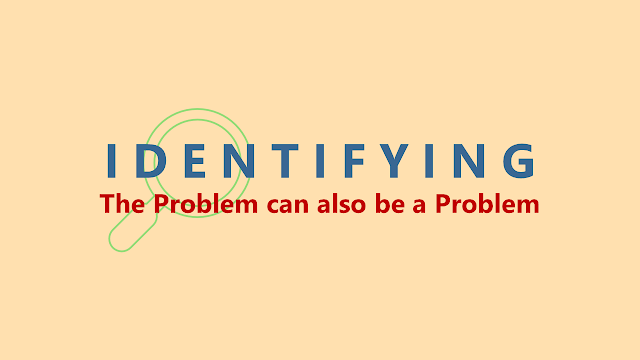How To Enhance the State of Innovation in Your Organisation
I’ve gathered experiential data of
such perspectives by engaging over 100+ organisations, and enabling 2500+
individuals, over the past decade and a half.
However, to quantify the same, I
conducted a LinkedIn Poll in which I asked my extended network to choose
between four perspectives that I have predominantly come across.
The number of perspectives which
I could share were limited by the LinkedIn feature, and hence, I synthesised
these into four discreet ones.
To keep the options open for
more and varied perspectives, I invited respondents to share anything else in
the comments section.
The poll options and
the percentage of responses were as follows:
A. Joke: Taken lightly/ ridiculed … 11%
B. Buzzword: Only talk, no action … 22%
C. Task: High action, low impact … 22%
D. Growth-driver: Adds to goals … 46%
Over the week that the poll was
active, it gathered votes with respondents comprising of Founders, Chief
Executive Officers, Managing Directors, General Managers, Presidents, and Heads
of Innovation, from organisation sizes ranging from <10 to 100,000+ globally.
What can we infer
from this?
The results broadly matched with
my experiential information but it was good to see my perceptions being quantified.
It was highly encouraging to see
that:
1)
The hierarchy of responses
increased from A to D.
2)
Only about 10% responses
were for A.
3)
Nearly 50% of the
respondents were utilising innovation as a growth driver.
To those who responded with
option D - ‘Growth-driver’, when asked to share the contribution of innovation
to their organisational goals, they were unable to provide specific data points.
This may have been due to various reasons e.g., confidentiality, inability to
quantify the outcomes, and others.
Hence, debatably, we can also
infer that organisations are unable to openly share the contributions of
innovation to their organisational goals.
What can Organisations
in state A, B, C do?
Based on my experience, I have
observed that it starts with the intent of the leader – whether s/he is the
head of the organisation, department, region, function or own life. If the
leader genuinely intends to innovate, s/he will innovate based on his/her
intuitive abilities.
Such outcomes survive until the
tenure of the leader in that context, and to some extent, slightly beyond too.
A new leader in that context will drive things as per his/her abilities.
So, in any organisation/context,
for innovation to move from being perceived as a ‘Joke’ to a continuous ‘Growth-driver’
(or ‘way-of-life’, as it is commonly expected), the leader has to strive to:
- Generate meaningful
outcomes.
- Make outcomes visible
to all the relevant stakeholders.
It is easy to measure and demonstrate
the outcomes in areas where innovations are directly impacting the top-line
and/or bottom-line for e.g., revenue, profits, market share, cost reductions
etc.
However, it is not easy to
measure and demonstrate the outcomes in areas which do not directly impact the
top-line and/or bottom-line. In such cases, it is advisable to evolve some scale
or formula that is aligned with all stakeholders. This scale or formula can be
refined as more data points are available.
Some commonly known examples of
such scales are Great Place To Work (GPTW) scores and ranking, Brand Score,
Customer/ Employee/ Supplier Satisfaction scores etc. To have all the
stakeholders, including the respondents, on the same page, the scale should
have a descriptor that is easy to interpret.
Take the example of the poll
options that I had set-up. Instead of saying rate the level of innovation on a
scale of 1 to 5, I attempted a descriptor for each point on the scale.
We will find many scales with
very generic descriptors i.e. Not Satisfied to Extremely Satisfied. We will
also know, how we feel, as respondents, when we fill such surveys. Hence, it is
best to avoid such descriptors and give the ones that are relevant to the point
for which the response is requested.
What can Organisations
in state D do?
During my engagement with
organisations that were already leveraging innovation as a ‘Growth-driver’, I
realised that they could scale it up further if they measured and shared the
impact of outcomes with all relevant stakeholders.
Some of the outcomes were:
- 10% additional profits actualised across the organisation.
- 2x higher impact than other methods in all areas where it was applied.
Apart from this, some of the things
that were done were:
- Co-evolved an innovation strategy that was contextualised for the organisation as a whole and each of its sub-unit as well.
- Defined an approach/ methods for innovation that was customised based on various approaches/ methods that had worked in the organisation.
- Developed a small team of internal facilitators who imbibed the approach and continued to customise it and enable others in the organisation to apply it.
Even prior to my engagement,
these organisations were leveraging innovation as a ‘Growth-driver’. After deploying
these aspects, they could:
· Make it more impactful.
· Take it wider and deeper across the organisation.
· Sustain the culture over a longer period of time
For more details of these
engagements and client’s views as well, please refer to my book, Dealing with
the Mirage: Institutionalising Innovation.
In this book, I have also
attempted to share many dilemmas that the leaders have faced around innovation,
and how have we worked together to resolve these.
More information on this book is
available on https://dwm.sbakshi.com.
In the interest of mutual
learning, please feel free to share your experiences on making innovation more
impactful and sustainable in your organisation.
To discover more aspects, that can
make innovation deliver higher value in your context, feel free to comment or
DM. We could have an exploratory conversation in mutual interest!



